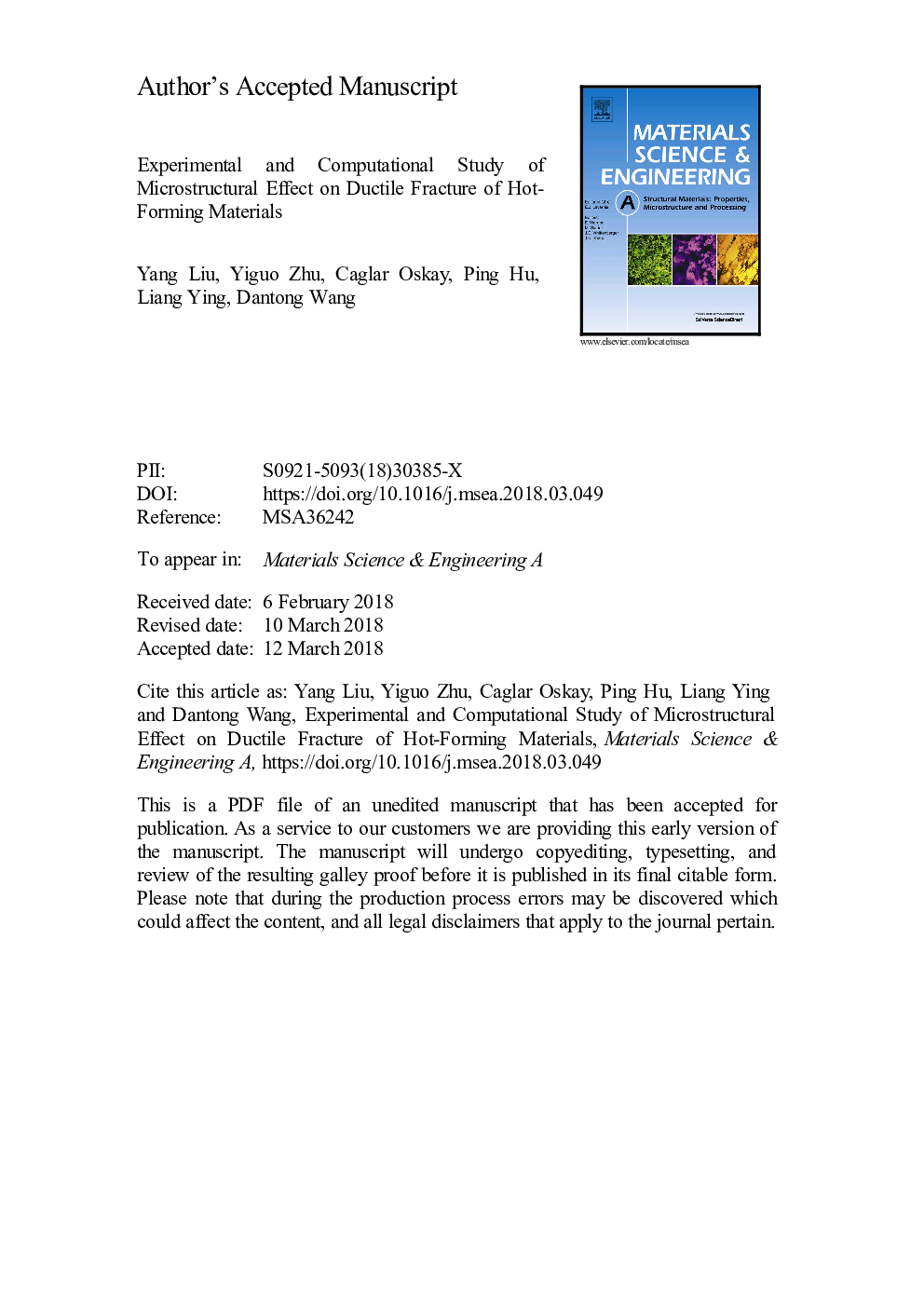| Article ID | Journal | Published Year | Pages | File Type |
|---|---|---|---|---|
| 7972504 | Materials Science and Engineering: A | 2018 | 57 Pages |
Abstract
Thermo-mechanical experiments at different elevated temperatures are carried out for tensile and shear-dominant specimens extracted from warming forming materials of 7075 aluminum alloy and 22MnB5 boron steel, respectively. A specimen-embedded furnace jointed by temp-control system to perform the high temperature shear experiments. Driven by microscale anisotropic plastic flow, damage is embedded in each slip system and damage evolution is controlled by the preferential dislocation slip. Combined with microscale damage and dislocation density based constitutive model, an advanced crystal plasticity method is proposed to perform predictions of mechanical behavior of face-center-cubic materials at various temperatures. Reasonable agreement is obtained between experimental and numerical results for different specimens, temperature conditions and materials. This approach simultaneously captures the strain hardening rate, damage softening, non-linear post-necking and fracture strain. Microstructural effects on ductile fracture are tracked and investigated including dislocation density and crystallographic orientation. The results show that local dislocation density rise is associated with damage initiation. Different fracture morphologies and necking paths are caused by distinct initial misorientation distributions in comparison with experimental observation of 7075 aluminum alloy. Local misorientations are investigated and critical misorientation ranges are computed for promoting void growth in zigzag and straight fracture morphologies. Schmid factor is computed as not necessary variable to trigger void growth.
Keywords
Related Topics
Physical Sciences and Engineering
Materials Science
Materials Science (General)
Authors
Yang Liu, Yiguo Zhu, Caglar Oskay, Ping Hu, Liang Ying, Dantong Wang,
